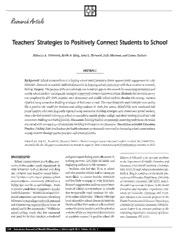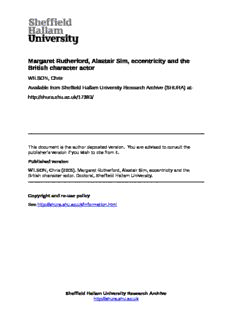
Margaret Rutherford, Alistair Sim, eccentricity and the British character actor PDF
Preview Margaret Rutherford, Alistair Sim, eccentricity and the British character actor
Margaret Rutherford, Alastair Sim, eccentricity and the British character actor WILSON, Chris Available from the Sheffield Hallam University Research Archive (SHURA) at: http://shura.shu.ac.uk/17393/ A Sheffield Hallam University thesis This thesis is protected by copyright which belongs to the author. The content must not be changed in any way or sold commercially in any format or medium without the formal permission of the author. When referring to this work, full bibliographic details including the author, title, awarding institution and date of the thesis must be given. Please visit http://shura.shu.ac.uk/17393/ and http://shura.shu.ac.uk/information.html for further details about copyright and re-use permissions. Sheffield Hallam University 2S>22 Learning and IT Services Adsetts Centre City Campus Sheffield S1 1WB 101 826 201 6 Return to Learning Centre of issue Fines are charged at 50p per hour REFERENCE Margaret Rutherford, Alastair Sim, Eccentricity and the British Character Actor by Chris Wilson A thesis submitted in partial fulfilment of the requirements of Sheffield Hallam University for the degree of Doctor of Philosophy September 2005 I should like to dedicate this thesis to my mother who died peacefully on July 1st, 2005. She loved the work of both actors, and I like to think she would have approved. Abstract The thesis is in the form of four sections, with an introduction and conclusion. The text should be used in conjunction with the annotated filmography. The introduction includes my initial impressions of Margaret Rutherford and Alastair Sim's work, and its significance for British cinema as a whole. In order to determine their enduring appeal, the first section, 'Biographical Perspectives', uses the actors' respective biographies to combine their very distinct identities, anchor them in the time in which they lived, and indicate their value and importance to the industry. The second chapter explores the complex relationship between the British cinema and the theatre, especially as it is revealed in the work of both actors. There follows a survey which addresses notions around Britishness and eccentricity, and their interconnections, their representation in Sim and Rutherford's films, and recent debates about what these attributes constitute now. The fourth part engages in a broader discussion of the art of character acting and the specific contribution made by the screen appearances of the two stars. If the introduction and subsequent chapters attempt to bring Sim and Rutherford together, the conclusion presents the contrasts between them. However, their continuing fascination is very much revealed through the interaction of their life and work and especially the influence of their respective spouses. The relationship between their stage and cinematic output informs some of their best work in both media, although their Britishness and eccentricity can, at different times, be both an asset and a limitation. Ultimately, Sim and Rutherford are defined as flexible and diverse character actors, although a synthesis of their various aspects - cinematic, theatrical, eccentric, British, character actors - offers a more complete designation of their individuality. Above all, they exemplify the primacy of performance in British cinema. Future research might concentrate on their theatre work or reactions to them by their fellow actors, and could also usefully incorporate the largely unrecognised legacy of so many other character players. Contents Introduction.......................................................................................................................1 Biographical Perspectives............................................. .................................9 Alastair Sim, Margaret Rutherford: cinema and theatre in the British context.......................24 Britishness and eccentricity in the work of Alastair Sim and MargaretR utherford..................66 Alastair Sim and Margaret Rutherford as character actors ........................................112 Conclusions and Summary................................................................... 192 Annotated Filmography - Introduction................................ 197 Annotated Filmography - Alastair Sim.............................................. .....199 Annotated Filmography - Margaret Rutherford.................................................................241 Joint Chronological Filmography.....................................................................................282 Film and Television Appearances - Alastair Sim..............................................................289 Film and Television Appearances - Margaret Rutherford............. .....292 Additional Filmography and Audio Material......................................................................295 Bibliography..................................................................................................................296 Introduction The immediate genesis for this project was my M.A. Film Studies Dissertation, 'Margaret Rutherford, Eccentricity and the Character Actor1 (1999), although my fascination with Rutherford and Alastair Sim goes back much further. I remember being impressed by Rutherford's Miss Marple at the age of eight when Murder at the Gallop (1963) was screened at my school as a new film. I had no foreknowledge of her career nor the current debates around the British film industry. Any theoretical concerns about the medium of cinema, in which I was a willing participant, were not yet formed in my mind. If my judgment at the time was necessarily ill-informed, it was at least undistracted by the intellectual baggage of adulthood which tends to favour objective analysis over raw emotion. [1] My enthusiasm for the film was based less on its aesthetic qualities - the black and white stock, its camera angles, its Britishness - than Rutherford's central performance underpinned by Ron Goodwin's memorable bouncy score. With hindsight, MGM's Miss Marple series of the early 1960s seem slight concoctions in the context of world cinema, and there is an odd disjunction between Rutherford's status as one of the American company's highest paid British stars of the period and the rather haphazard production values which the films display. [2] However, the charm and eccentricity of the actress's amateur detective remains to delight subsequent generations of a more cynical age. I was conscious of Alastair Sim's work somewhat later on, but his name was familiar to me long before I watched any of his films due to the slenderest of personal connections to the actor. In the 1960s and 1970s my mother and I would often visit a great aunt who lived in a country cottage near Henley-on-Thames, and she would occasionally mention her neighbours, one of whom was a famous actor (Sim). I have a faint recollection of hearing the Sims and their friends playing tennis in the summer and thought nothing of it as a child and young adult. Only later did the memory become more vivid once I had researched the biographical particulars of Sim’s life and could appreciate this happenstance from another point of view. Of course, I never met him, neither did my great aunt, and despite the laughter and bonhomie that echoed through the trees, such was Sim's need for privacy that he might not have appreciated the presence of any strangers at his house, which became a retreat from the stresses and strains of working in the theatre and on the film set. Personal considerations apart, my selection of Sim and Rutherford as representatives of the most eccentric character actors of their generation is due not only to their invigorating presence in films from the 1930s to the 1970s, but also because their significance is often barely acknowledged even in some recent accounts of British cinema For instance, Geoffrey Macnab is content to reduce their appeal to 'mild dottiness', while Bruce Babington, who considers that 'elderly comic eccentrics have an interestingly prominent role in the national cinema', relegates them to 'minor stardom'. [3] Babington justifies this categorization 'in a pre 1960s societal context of greater authority and less mobility' and believes the issue of stardom to be 'less theoretically resolvable...especially within the British context, in which the various criteria of stardom are often underplayed'. [4] The author tackles British stars in Hollywood, major figures in the national cinema, cult stars and even those who have an unsteady claim to stardom, but not Rutherford or Sim, who won popularity polls and achieved iconic status in the 1950s and 1960s when heartwarming appreciations of them often appeared in newspapers and magazines. It is also instructive to realise, for instance, that the exhibitors who contributed to Kine Weekly's yearly box office survey name Sim as the second most popular star of 1954, for The Belles of St Trinian’s (1954) and An Inspector Calls (1954), sandwiched between James Stewart and Gregory Peck (!), or that the Variety Club of Great Britain award Rutherford the accolade of best British film actress for 1963, for Murder at the Gallop and The V.I.P.s (1963), over any number of their more conventionally glamorous contemporaries. [5] What interests me is not that their contributions to British cinema tend to be undervalued, but why they achieved such enormous popular acclaim and star status at the time, an esteem which has been maintained over the years since their deaths in the 1970s. Was it that they represented a comic relief in British cinema which gave them licence to lampoon those in authority, when it might have been less acceptable in high drama during an era of a societal repression? [6] Or was it the fact of their recurring presences which reassured audiences in post-war Britain that, despite the age of austerity and the dismantling of empire, here were two stalwart survivors, an eccentric though universal aunt and uncle, on whom the nation could depend? [7] The Happiest Days of Your Life (1950) is their only real collaboration in the cinema, and yet its effect was to bind together their very separate identities in the public mind, and perhaps a more enlightened business might have capitalised on the film's success. [8] Despite this relative lack of support from an industry without a star system to rival Hollywood, they still emerged as international figures while remaining quintessential^ British at the same time. To uncover the reasons for Sim and Rutherford's enduring appeal and their uniqueness in British cinema, I shall first use their respective biographies as a starting point to anchor them in the time in which they lived and indicate their value and importance to the industry. Then I will explore the relationship of British cinema and theatre, with special reference to the careers of the two stars. The next section will compare notions of Britishness and eccentricity in Sim and Rutherford's films with more recent debates about what these constitute now. And finally, I shall examine the role of the British character actor in all its richness and complexity within the acting hierarchy, from bit-part to star vehicle, as exemplified in the films of Sim and Rutherford. Inevitably certain points of discussion have had to be jettisoned in favour of others. For example, I was initially engaged by the idea of British cinema as one of performance rather than the customary concentration on auteur directors like Hitchcock, Lean and Michael Powell. In addition, I was keen to examine the notion of 'charm' in the performances of Sim and Rutherford. Could it be measured/quantified? Was it an innate quality or mere retrospective/retrogressive nostalgia? However, pressures of space and time dictated that they be dropped. What remains are four distinct sections which cover different aspects of Sim and Rutherford's life and art. The first chapter, 'Biographical Perspectives', clearly binds the two together as they seem, particularly in these actors' lives, to inform one another so iliuminatingly. It is of more than passing interest, for instance, to make a direct connection between Sim's unhappy relationship with his father, and those he encountered in his army training, and his sharp and satirical portrayals of authority figures, or to link Rutherford's eccentric and quirky screen characterisations with her own fears about inheriting the strains of insanity, murder and suicide in her family background. I also present an account of the actors' continuing legacy through the publishing of books and articles, the holding of retrospectives of their work, and, most of all, by the continual re-screening of their films on television (and occasionally in the cinema), to say nothing of the importance of video and DVD reissues. The chapter emphasizes the dominance and significance of theatre in both actors' lives, and it is the complex relationship between their stage and screen work which informs the substance of the next section. I examine this relationship from an historical perspective, discuss the adaptations of stage plays versus the creation of original scenarios, and question the varying degrees of success with which Sim and Rutherford use their theatrical training in their screen work. Their very theatricality on the screen leads inevitably to an examination of their Britishness and eccentricity in the next chapter. Are the two qualities connected? How are they manifest in the films? Can eccentricity be an excuse for overacting? And so on. This leads to a broader discussion around the nature of character acting in general and the specific attributes of Sim and Rutherford in particular. All these sections should be used in conjunction with the annotated filmography, which has its own introduction, and whose function is to provide plot summaries and a critical commentary on each film and television programme; in addition, the square-bracketted numbers in the text refer to notes and references which can be found at the end of each chapter. I have also included, for the sake of the convenience of an historical overview, a joint chronological listing of the actors' work, as well as separate more detailed lists for each actor which incorporate other items of more documentary interest, before a final bibliography. The principal sources for material on Sim and Rutherford come in the form of the usual biographies, which are supplemented by articles and television documentaries. Eric Keown's book provides a useful introduction to Rutherford's art and is particularly valuable for his comments on her stage work; unfortunately the story finishes in the mid 1950s, before Rutherford's return to high-profile stardom in the following decade. [9] However, this lack of information is more than compensated for by Rutherford's autobiography (with Gwen Robyns) and a later biography by the actress's adopted daughter, Dawn Langley Simmons, which draws heavily upon the other accounts. [10] But it is disappointing to find gaps in the former - for example, a whole chapter is devoted to the circumstances surrounding Rutherford's cameo in Chaplin's A Countess From Hong Kong (1967), while there is minimal discussion of
Description:The list of books you might like

Do Epic Shit

A Thousand Boy Kisses

The Mountain Is You

What Happened to You?
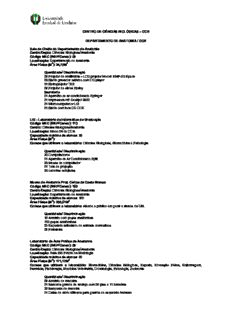
CENTRO DE CIÊNCIAS BIOLÓGICAS – CCB DEPARTAMENTO DE ANATOMIA / CCB Sala da

Sandkings
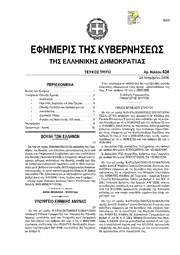
Greek Government Gazette: Part 3, 2006 no. 434
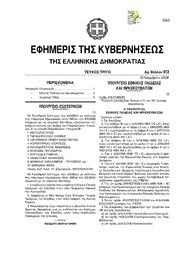
Greek Government Gazette: Part 3, 2006 no. 413
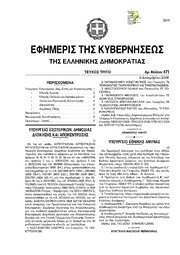
Greek Government Gazette: Part 3, 2006 no. 471
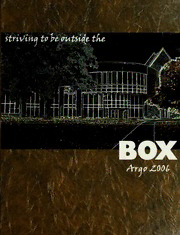
Argo
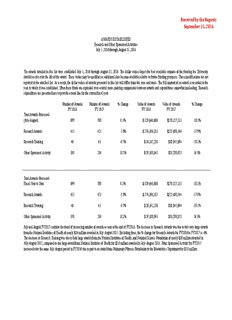
Awards Established, July 1, 2016-August 31, 2016

Anecdotes of the Great War by Carleton Britton Case

Belgians Under the German Eagle by Jean Massart
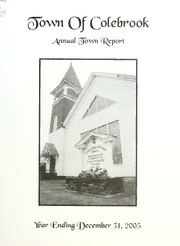
Colebrook, New Hampshire annual report

Greek Government Gazette: Part 1, 2006 no. 75
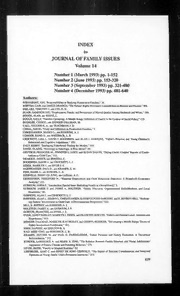
Journal of Family Issues 1993: Vol 14 Index

Living with an Implanted Cardioverter Defibrillator (ICD)

DTIC ADA521722: Orchestrating Instruments of Power for Nationbuilding

Journal of Organometallic Chemistry 1993: Vol 448 Table of Contents
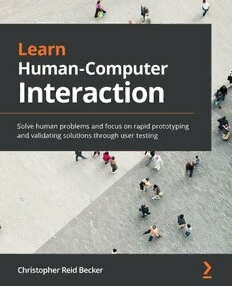
Learn Human-Computer Interaction: Solve human problems and focus on rapid prototyping and validating solutions through user testing

Clinique du suicide
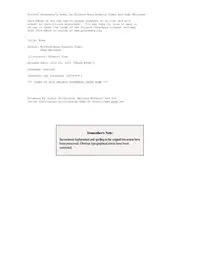
Rome by M A R Tuker and Hope Malleson

